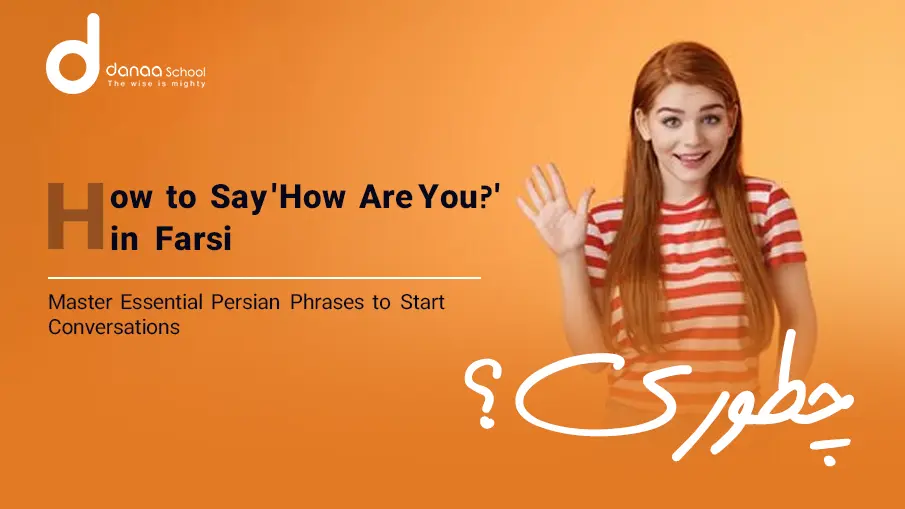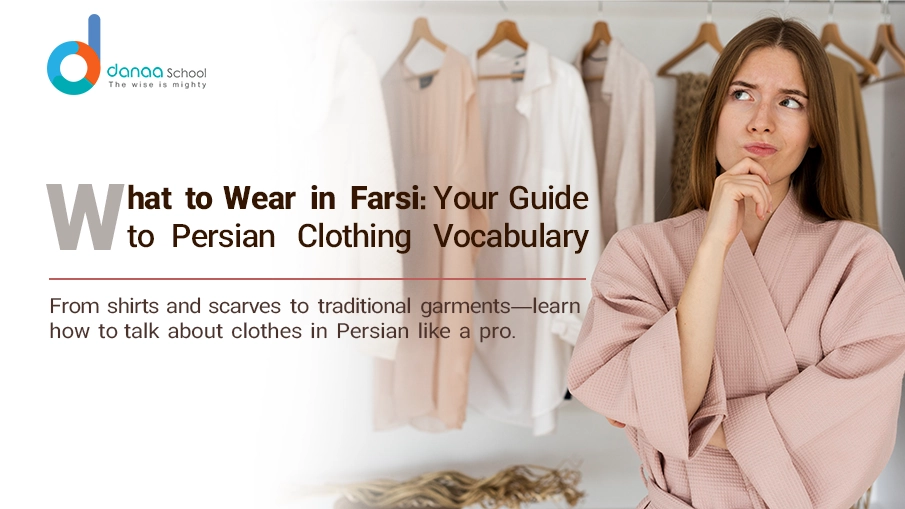How to Say How are you in Farsi
When learning a new language like Persian (Farsi), knowing how to greet someone politely is crucial. Persian culture, with its deep-rooted traditions, reflects a variety of ways to express greetings depending on the situation and relationship. So, if you want to know how to say How are you in Farsi, it’s essential to understand the nuances, formality, and the appropriate context for each phrase to learn Farsi.
Persian speakers don’t always use the same phrase for How are you? in Farsi across all contexts. They may switch between formal, informal, and colloquial expressions based on the relationship between speakers and the occasion. Let’s break them down.
Informal Ways to Ask How Are You?
If you’re speaking with friends or family, informal greetings are common. In Persian culture, relationships are cherished, and informal greetings often convey warmth and closeness.
-
- Haletoon khub-eh? (حالتون خوبه؟)
This phrase translates to “Are you well?” and is the most commonly used way to ask “How are you?” in an informal tone. It’s polite but casual enough to be used in daily interactions with close friends.
- Haletoon khub-eh? (حالتون خوبه؟)
-
- Haletoon chetor-eh? (حالتون چطوره؟)
Another informal version, which literally means, “How is your condition?” is often used interchangeably with “Haletoon khub-eh?”. It’s more relaxed but still respectful.
- Haletoon chetor-eh? (حالتون چطوره؟)
-
- Che khabar? (چه خبر؟)
This casual phrase directly translates to “What’s the news?” or “What’s up?” It’s commonly used among close friends and family when asking about recent happenings rather than just someone’s health.
- Che khabar? (چه خبر؟)
Formal Ways to Ask How Are You?
In more formal contexts, such as addressing elders, teachers, or during business interactions, using respectful language is expected.
-
- Hal-e shoma khub hast? (حال شما خوب هست؟)
This formal greeting translates to “Is your health good?” and shows a deeper level of respect, perfect for addressing people you don’t know very well or those in authoritative positions.
- Hal-e shoma khub hast? (حال شما خوب هست؟)
-
- Hal-e shoma chetor hast? (حال شما چطور هست؟)
Slightly different in structure but similar in meaning, this version can be used to inquire, “How is your health?” in a more formal and polite manner.
- Hal-e shoma chetor hast? (حال شما چطور هست؟)
Casual Replies to How Are You? in Farsi
Once you’ve asked someone how they’re doing, you should be prepared for the conversation to continue. Here are a few casual responses that are both polite and appropriate for different contexts.
-
- Salamati (سلامتی)
A straightforward response meaning “Health,” implying that everything is fine. It’s short, simple, and to the point, often used when you don’t want to go into detail.
- Salamati (سلامتی)
-
- Mashghoolam (مشغولم)
This phrase means “I’m busy.” It’s a casual response to indicate you’re occupied, but it’s not necessarily negative.
- Mashghoolam (مشغولم)
-
- Saram shlooghe (سرم شلوغه)
Literally translated as “My head is crowded,” this expression means “I’ve been busy.” It’s another way to express that you’ve had a lot going on without being overly formal.
- Saram shlooghe (سرم شلوغه)
Deeper Meanings Behind Persian Expressions
Persian expressions often involve metaphorical language that might seem confusing to non-native speakers. For instance, using sar (سر), meaning “head,” appears in many phrases.
-
- Vaght-e sar kharandan nadaram (وقت سر خاراندن ندارم)
Literally, “I don’t have time to scratch my head!” This humorous idiom means you’re extremely busy. Using idioms like these will not only impress native speakers but will also enrich your own vocabulary in an authentic way.
- Vaght-e sar kharandan nadaram (وقت سر خاراندن ندارم)
The Cultural Significance of Greetings in Persian
Iranian culture places a high value on polite communication. Greetings aren’t just a matter of formality—they show respect, warmth, and a desire to establish connection. In more traditional settings, such as family gatherings or formal business meetings, greetings often include inquiries into the person’s well-being, family, and even professional life. These questions go beyond “How are you?” and often lead to deeper, meaningful conversations. For example, you may hear questions like:
-
- Khodetoon chetorid? (خودتون چطورید؟)
This means, “How about you?” as a way to reciprocate interest in the other person’s well-being.
- Khodetoon chetorid? (خودتون چطورید؟)
-
- Ahval-e khanevadeh chetor ast? (احوال خانواده چطور است؟)
This is a polite way of asking, “How is your family?” This type of greeting indicates care for the person’s loved ones and is a gesture of goodwill.
- Ahval-e khanevadeh chetor ast? (احوال خانواده چطور است؟)
Why Mastering Greetings in Farsi is Important
Understanding the various ways to say “How are you?” in Farsi will not only help you navigate conversations but also make a strong impression on native speakers. Whether you’re in a formal setting, chatting with friends, or just trying to keep up with casual greetings, knowing these expressions will give you more confidence in your interactions.
Additionally, learning the cultural importance of greetings in Persian society can help you form deeper connections. Iranians appreciate effort in language and cultural understanding, so even a simple greeting can open doors to richer relationships and friendships.
Common Mistakes to Avoid When Greeting in Farsi
When learning to greet people in Farsi, it’s easy to make mistakes. Here are a few tips to ensure you don’t fall into common traps:
-
- Using Informal Greetings in Formal Situations: While phrases like che khabar? are fine with friends, using them in a formal context might come off as disrespectful. Stick to formal greetings when addressing elders or in professional settings.
- Overusing Idiomatic Expressions: While idioms like vaght-e sar kharandan nadaram can add color to your language, overusing them in the wrong context can make the conversation feel forced. Use these phrases sparingly until you’re confident in their correct application.
FAQs
Can I use "Che khabar?" in formal situations?
Not really. “Che khabar?” is too informal for formal situations. Stick to phrases like “Hal-e shoma khub hast?” for a more respectful tone.
What is the difference between "Haletoon khub-eh?" and "Haletoon chetor-eh?"?
Both are informal, but “Haletoon khub-eh?” is asking if the person is well, while “Haletoon chetor-eh?” is more open-ended, asking how the person is in general.
How do I reply to "Hal-e shoma chetor hast?"
A simple “Salamati” (health) is enough, or you could elaborate with “Khobam, mamnoon” (I am fine, thank you).
Is it polite to ask "Che khabar?" when meeting someone for the first time?
It depends. If it’s a casual setting, “Che khabar?” works. But in a formal or first-time meeting, it’s better to ask, “Hal-e shoma khub hast?”
What does "Mashghoolam" mean in Farsi?
“Mashghoolam” means “I am busy,” often used as a casual response to a question like “Che kar mikoni?” (What are you doing?).
Can I use "Hal-e shoma khub hast?" with family members?
Yes, but it’s more formal. With close family, informal phrases like “Haletoon khub-eh?” are more common.
Conclusion
Mastering the art of greetings, including how to say How are you? in Farsi, can significantly enhance your Persian language skills. From informal to formal settings, the key is to adapt your language to the situation and audience.
By understanding the cultural depth and variation in Persian greetings, you’ll not only improve your language proficiency but also build stronger relationships in Persian-speaking communities. Whether you’re asking “Che khabar?” or respectfully inquiring with “Hal-e shoma khub hast?”, you’re well on your way to conversational success in Farsi. Get started now.









